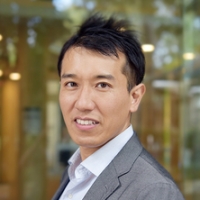ICCME 2025 Keynote Speakers
| Keynote Speaker #1 | |
|---|---|
 Prof. Yusuke Yamauchi, The University of Queensland, Australia / Distinguished Professor, Nagoya University, Japan |
|
| Introduction | Professor Yusuke Yamauchi received his Bachelor's degree (2003), Master's degree (2004), and Ph.D. degree (2007) from Waseda University, Japan. After receiving his Ph.D., he joined the National Institute of Materials Science (NIMS) in Japan, to start his own research group. At the same time, he began to serve as an adjunct professor to supervise Ph.D. students at the Department of Nanoscience and Nanoengineering, Waseda University. After being granted the ARC Future Fellowship, in May 2016, he joined the Institute for Superconducting & Electronic Materials (ISEM), the Australian Institute for Innovative Materials (AIIM) at the University of Wollongong (UOW) as a Professor. In 2017, he moved to the University of Queensland (UQ). Presently, he is a Senior Group Leader at the Australian Institute for Bioengineering and Nanotechnology (AIBN) (on secondment from the School of Chemical Engineering until 2026), a Professor at the School of Chemical Engineering, and a Director at the Australian Materials nanoTectonics Centre, UQ. He concurrently serves as an ERATO Research Director at the JST-ERATO Yamauchi Materials Space-Tectonics, a Distinguished Professor at Nagoya University (Japan), an Honorary Distinguished Professor at Yonsei University (South Korea), an Invited Researcher at the National Institute for Materials Science (NIMS), a Guest Senior Researcher (Guest Professor) at Waseda University, an Advisory Board Member of prestigious journals (Small, Small Structures, Precision Chemistry, ChemCatChem, J. Inorg. Organomet. Polym. Mater., etc.) and an Associate Editor of the Journal of Materials Chemistry A published by the Royal Society of Chemistry (RSC) and Chemical Engineering Journal (Elsevier). |
| Title | Materials Space-Tectonics: A Conceptual Paradigm for Creating Second-Generation Porous Materials |
| Abstract | Different types of inorganic nanomaterials have been designed by using various methods including sol-gel, electrochemical/chemical reduction, calcination, hydrothermal reaction, etc. The dimensionality of these nanomaterials (x, y, z) can be classified as zero-dimensional (0D), one-dimensional (1D), two-dimensional (2D), or three-dimensional (3D), respectively. Accordingly, for 0D nanomaterials dimensions are measured on the nanoscale (< 100 nm for each dimension). 0D nanomaterials, for example nanoparticles (or sometimes, nanocrystals), most commonly have isotropic morphologies where the usually thermodynamically stable planes of lower reactivity are exposed at the nanoparticles’ surfaces. For 1D nanomaterials, a single dimension is extended beyond the nanoscale. This class of nanomaterials includes nanotubes, nanorods, and nanowires. In contrast to 0D and 1D nanomaterials, 2D nanomaterials have recently attracted great interest for the next generation of promising. However, such 2D materials are often formed by stacking/assembly, processes that vastly reduce their active surface areas, and negatively affects their performance in potential applications. Despite recent and significant advances in inorganic nanomaterials of different dimensionalities, we still remain active in making substantial efforts to develop new nanomaterials to help address energy- and environmental-related issues. Our group is fully aware of the serious limitations of the currently available materials’ designs. The continued use of the current nanomaterials design paradigm based on traditional 0D, 1D, 2D nanomaterials obscures the innovative approaches required to address the aforementioned serious issues. Therefore, we have developed a new conceptual paradigm “materials space-tectonics” which is defined as the creation of novel mesoporous/nanoporous materials with precisely controlled internal space (or pore size), composition, and morphology with the assistance of nanomaterials informatics to optimize their functional applications. |
| Keynote Speaker #2 | |
|---|---|
 Prof. Ramesh K. Agarwal, Washington University in St. Louis, USA |
|
| Introduction | Professor Ramesh K. Agarwal is the William Palm Professor of Engineering in the department of Mechanical Engineering and Materials Science at Washington University in St. Louis. From 1994 to 2001, he was the Sam Bloomfield Distinguished Professor and Executive Director of the National Institute for Aviation Research at Wichita State University in Kansas. From 1978 to 1994, he was the Program Director and McDonnell Douglas Fellow at McDonnell Douglas Research Laboratories in St. Louis. Dr. Agarwal received Ph.D in Aeronautical Sciences from Stanford University in 1975, M.S. in Aeronautical Engineering from the University of Minnesota in 1969 and B.S. in Mechanical Engineering from Indian Institute of Technology, Kharagpur, India in 1968. Over a period of forty years, Professor Agarwal has worked in various areas of Computational Science and Engineering - Computational Fluid Dynamics (CFD), Computational Materials Science and Manufacturing, Computational Electromagnetics (CEM), Neuro-Computing, Control Theory and Systems, and Multidisciplinary Design and Optimization. He is the author and coauthor of over 500 journal and refereed conference publications. He has given many plenary, keynote and invited lectures at various national and international conferences worldwide in over fifty countries. Professor Agarwal continues to serve on many academic, government, and industrial advisory committees. Dr. Agarwal is a Fellow eighteen societies including the Institute of Electrical and Electronics Engineers (IEEE), American Association for Advancement of Science (AAAS), American Institute of Aeronautics and Astronautics (AIAA), American Physical Society (APS), American Society of Mechanical Engineers (ASME), Royal Aeronautical Society, Chinese Society of Aeronautics and Astronautics (CSAA), Society of Manufacturing Engineers (SME) and American Society for Engineering Education (ASEE). He has received many prestigious honors and national/international awards from various professional societies and organizations for his research contributions. |
| Title | Multi-functional Layered Nanocomposites for Aircraft Applications |
| Abstract |
In recent years, there has been increased emphasis on ‘Environmentally Responsible Aviation (ERA)’ with the dual aims of reducing the energy consumption as well as emissions. Several new concepts for the aircraft have been proposed to reduce drag, improve engine efficiency, and reduce mass. In addition to various aerodynamic and propulsion technologies that are being researched to achieve the goals of ERA, reduction of aircraft mass has become one of the major drivers in developing new aircraft design concepts, novel materials and manufacturing processes. Among the novel materials, nanocomposites with multi-functionality offer the promise of weight reduction, reduced complexity, and integrated health management of aircraft components/systems. The new aircraft structures using multi-functional nanocomposites can be built using additive manufacturing. The focus of this talk is on recent developments in layer-by-layer assembly of nanomaterials in developing new nanocomposite structures.
Macroscale assembly of the nanomaterials requires special techniques with molecular scale component manipulation; it is different from conventional composite processing techniques. This technique offers the possibility of controlling the structure of composite materials at nanometer scale with high degree of accuracy and therefore allows the establishment of design rules for composite structures initially at small scale and then their possible replication at a larger scale using other methods of composite manufacturing. It is a method of alternating deposition of oppositely charged components from dilute solutions or dispersions on a suitable substrate. It is becoming a widely used method for the preparation of multifunctional thin films due to its simplicity, robustness and versatility. Introduction of hybrid organic/inorganic films has further enriched the functionality and applicability of layer-by-layer assembly. While this field covers a vast number of molecular species and architectures, this talk reviews the state-of-the-art in synthesis and properties of multilayer hybrid nanocomposites based on two commercially available functional nanomaterials - the clay nanosheets and carbon nanotubes (CNTs). Each of these two building blocks possesses unique structural and physicochemical properties thus enabling preparation of variety of functional composites. Furthermore, they are only a few nanomaterials that allow evaluation of the efficiency of stress transfer in composites since the mechanical parameters of individual nanotubes and individual clay sheets are available. The properties and functionalities of clays- and CNT-based multilayered structures are discussed. In addition, some of the future challenges in this field are discussed. |
